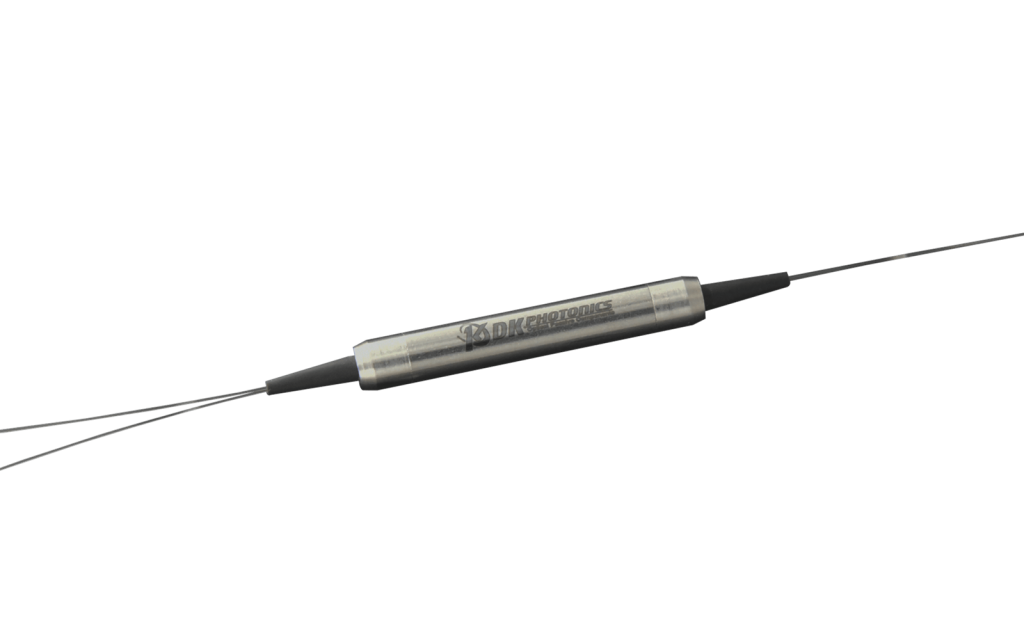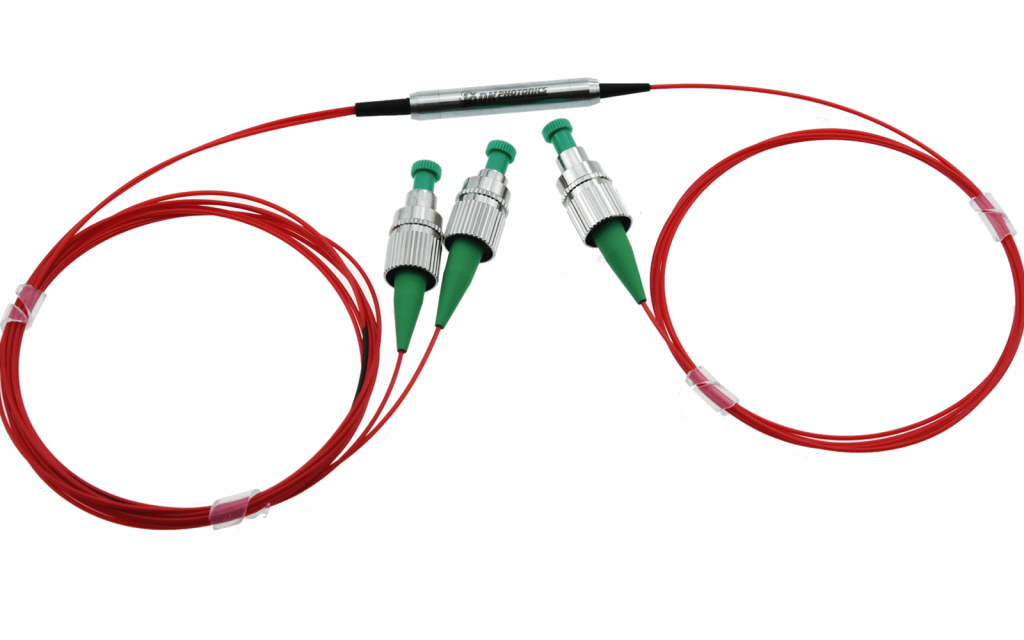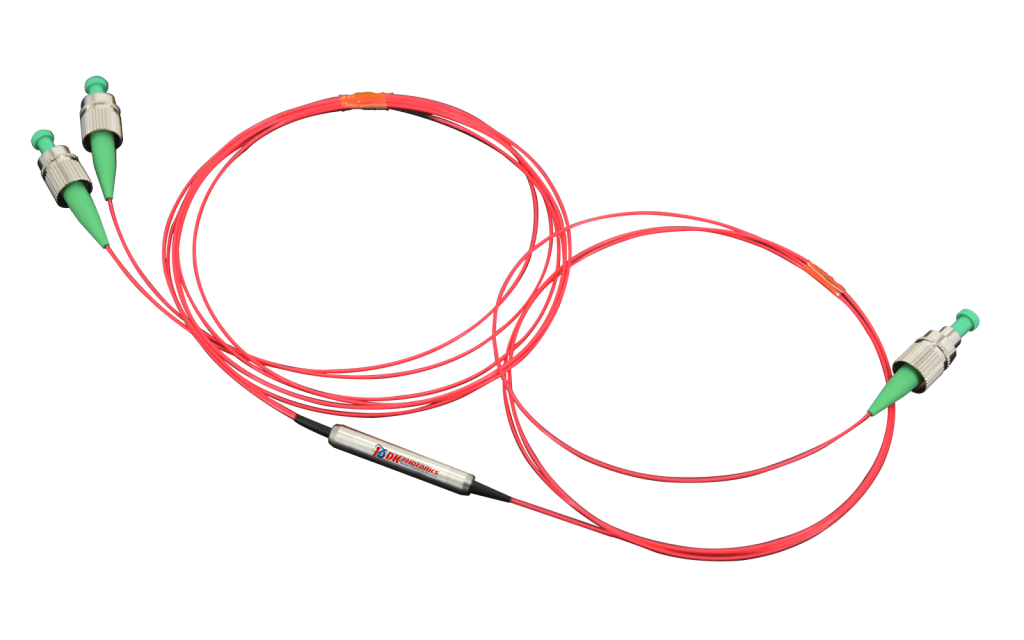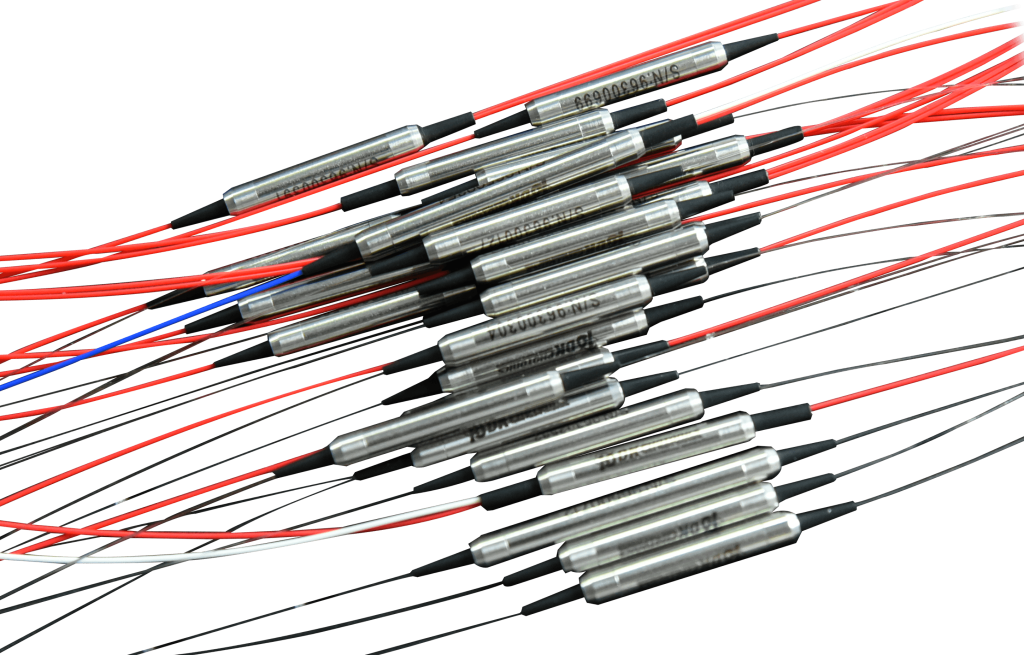The 980/1030nm Polarization Maintaining Filter WDM multiplexes PM signals and maintains the output polarization with high extinction ratio using advanced micro-optic filter technology. All input and output fibers are polarization maintaining. It utilizes advanced filter technology to yield wide-band, low insertion loss, high polarization extinction, high return loss in a compact package. This product can also be used to multiplex other wavelengths. including 980/1030 nm (pulsed laser applications) and 1064/1550 nm (Erbium-Ytterbium pumping). Low power (300 mW, 500 mW) and high power (5W) handling are available. It can also be provided with a PM isolator integrated in the same package. They are ideal for polarization maintaining fiber amplifiers, fiber lasers, and high speed communication system and instrumentation applications.
If you do not see a standard Polarization Maintaining Filter WDM that meets your needs, we welcome the opportunity to review your desired specification and quote a custom Polarization Maintaining Filter WDM. Custom pigtail fibers can be accommodated, as well as custom operational Pump & Signal wavelengths, and power handling requirements.DK Photonics can respond to custom requirements with short lead times.
Performance Specifications
|
PARAMETER
|
UNIT
|
T980/R1030
|
T1030/R980
|
|
Transmission Wavelength Range
|
nm
|
960~990
|
1020~1080
|
|
Reflect Wavelength Range
|
nm
|
1020~1080
|
960~990
|
|
Max. Insertion Loss@23℃
|
Transmission
|
dB
|
0.8
|
|
Reflect
|
dB
|
0.5
|
|
Min. Isolation@23℃
|
Transmission
|
dB
|
25
|
|
Reflect
|
dB
|
12
|
|
Min. Extinction Ratio@23℃
|
dB
|
20
|
|
Min. Channel Flatness
|
dB
|
0.3
|
|
Min. Return Loss
|
dB
|
50
|
|
Max. Power Handling(CW)
|
W
|
0.3, 0.7, 1, 2, 3, 5,10
|
|
Max. Tensile Load
|
N
|
5
|
|
Fiber Type
|
|
PM980-XP panda fiber
|
|
Operating Temperature
|
℃
|
-5 to +70
|
|
Storage Temperature
|
℃
|
-40 to +85
|
|
Package Dimensions
|
mm
|
Ø5.5 x L35
|
- Above specifications are for device without connector, all parameters are tested at room temperature.
- PM WDM device is both axis working, but we can integrate a polarizer to achieve the pass wavelength fast axis blocked, contact DK Photonics for details.
- For devices with connectors, IL will be 0.3dB higher, RL will be 5dB lower and ER will be 2dB lower. Power transmits through the connector less than 2W. The default connector key is aligned to slow axis.
- For >10W high power applications, we will use heat sink package, contact DK Photonics for details.
- If there is pulse application, please be sure to inform us of pulse energy and peak power.
Package Dimension

For high power applications, we will use heat sink package, contact DK Photonics for details. Please contact DK Photonics for confirmation.
Order information
P/N: PMFWDM-①-②-③-④-⑤
When you inquire, please provide the correct P/N number according to our ordering information and attach the appropriate description would be better. If need any connector, we do not recommend choosing a 250μm bare fiber pigtail.
| ① |
② |
③ |
④ |
⑤ |
| Wavelength |
Power Handling |
Pigtails Diameter |
Fiber Length |
Connector |
|
93:980nm pass/1030nm reflect
39:1030nm pass/980nm reflect
|
S:<0.3W
L:<0.7W
1:1W
2:2W
|
25:250μm bare fiber
90:900μm Loose Tube
XX: Others
|
05:0.5m
08:0.8m
10:1.0m
XX: Others
|
00: None
FP: FC/PC
FA: FC/APC
SA: SC/APC
LA: LC/APC
XX: Others
|
Part Number Example: PMFWDM-39-1-90-10-FA
Description: 980/1030nm Polarization Maintaining Filter WDM – 1W, 1030 pass/980nm reflect, with 0.9mm OD loose tube, 1.0m fiber length, and FC/APC connectors at all ports.
Ordering Information for Custom Parts:
If you need to customize other specifications, please provide detailed description for your requirement.





 DownloadDatasheet in PDF
DownloadDatasheet in PDF
